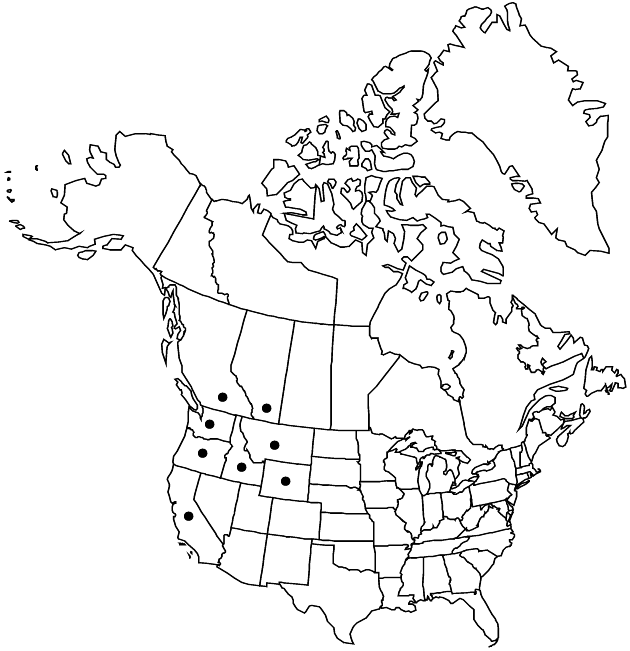Antennaria racemosa
Fl. Bor.-Amer. 1: 330. 1834.
Dioecious. Plants 12–50 cm (stems stipitate-glandular distally). Stolons 3–8 cm. Basal leaves: 3-nerved, elliptic to oblong, 30–100 × 10–40 mm, tips mucronate, abaxially tomentose, adaxially glabrous. Cauline leaves linear, 10–30 mm, not flagged (apices obtuse to acute). Heads 3–12 in loose, racemiform to paniculiform arrays. Involucres: staminate 4–8 mm; pistillate 7–9 mm. Phyllaries (relatively wide) distally white or light-brown (apices blunt). Corollas: staminate 3–4 mm; pistillate 3–4 mm. Cypselae 1–1.5 mm, glabrous or slightly papillate; pappi: staminate 3–4.5 mm; pistillate 4.5–7 mm. 2n = 28.
Phenology: Flowering summer.
Habitat: Moist, cool, montane and subalpine coniferous forests and roadcuts in forests
Elevation: 1200–3000 m
Distribution

Alta., B.C., Calif., Idaho, Mont., Oreg., Wash., Wyo.
Discussion
Antennaria racemosa is characterized by adaxially glabrous basal leaves and open, racemiform to paniculiform arrays of heads (R. J. Bayer 1985b). The young leaves have a slight odor of citronella when crushed. Antennaria racemosa has a pivotal sexual genome of the Catipes group and has contributed to the origin of clones in the A. howellii, A. parlinii, and A. rosea polyploid agamic complexes (Bayer 1985, 1985b, 1990b).
Selected References
None.